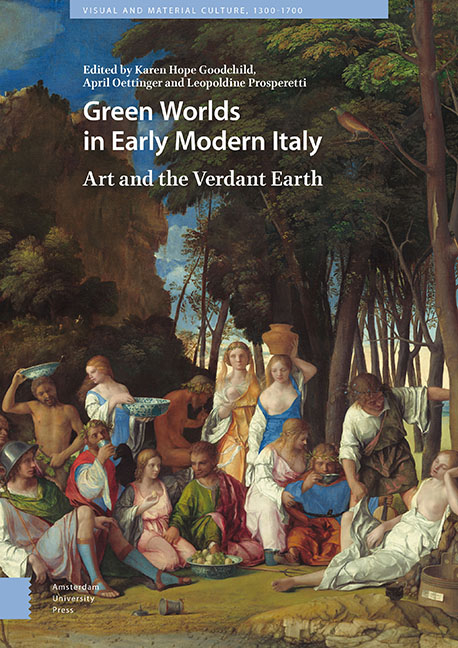Book contents
1 - The Green Places of Fra Filippo Lippi and Sandro Botticelli
Published online by Cambridge University Press: 21 November 2020
Summary
Abstract
In the later fifteenth century, the backgrounds of Florentine altarpieces and devotional paintings changed from glittering gold to vivid green. In numerous paintings by Fra Filippo Lippi and his students, including Sandro Botticelli, the Virgin adores the Christ Child in mystical evergreen forests and lush meadows hedged by rose bushes. This gold-to-green trend reflects developments in naturalism and growing appreciation for artistic skill; however, this essay argues that it was also contingent on the pharmacological, sensorial, and material merits of the color green. Green ‘things’ could restore and stimulate vision, and promote fertility and successful childbirth. This essay explores the artistic and economic value of pigments like green earth, verdigris, and malachite and the new techniques that Florentine artists developed for painting paradise on earth.
Key Words: Malachite, Verdigris, Lippi, Botticelli, Verdure, Adoration
Introduction
In the 1450s Florentine artists changed the backgrounds of their altarpieces and devotional paintings from glittering gold leaf (Fig. 1.1) to vivid green pigments (Plate 1). An early example is Fra Filippo Lippi (1406–69) who depicted mystical green forests in several of his Adoration of the Child paintings (Plate 1 & Fig. 1.2), which he completed for the Medici family between the late 1450s and mid-1460s. This same gold-to-green trend can be observed in the art of Lippi's student, Sandro Botticelli (1445–1510), who in his Piacenza Tondo (Plate 2) situated a Madonna Adoring the Child with St. John the Baptist in a verdant meadow partially enclosed by a hedge of roses. This artistic shift from heaven's abstract flatness to a tangible green world signals the beginning of naturalism in fifteenth-century Florentine painting. It also marks a shift in the taste of patrons, for whom the artist's skill outweighed the material value of his gold pigment, a point famously argued by Michael Baxandall in his Painting and Experience in Fifteenth-Century Italy.
- Type
- Chapter
- Information
- Green Worlds in Early Modern ItalyArt and the Verdant Earth, pp. 31 - 48Publisher: Amsterdam University PressPrint publication year: 2019

